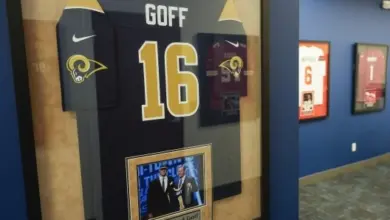Laser Settings when Using LaserBond 100 to Mark Glass
There are a couple of tricks to getting good results when marking on glass with LaserBond 100
There are a couple of tricks to getting good results marking on glass because the glass composition itself can vary greatly and glass cannot tolerate the thermal shock of the rapid temperature rise when the laser beam energy is being absorbed by the LaserBond 100 coating in order to make the chemical reaction occur between the LaserBond 100 coating and the glass surface. It is necessary to de-focus the glass surface about 3 to 4 mm (0.15 of an inch) below the focal point of the lens as measured with the focus stick or the auto-focus function (if available). De-focusing will slightly increase the size of the laser spot, but more importantly will decrease the power density of the laser spot, which reduces the thermal shock to the glass surface.
Under normal conditions, a CO2 laser spot size is about 0.005 to 0.006 of an inch (about 0.1 – 0.15 mm) in diameter, which means that the maximum resolution you can achieve in any graphic is about 300 DPI (dots per inch). Any higher DPI setting is basically wasted on the human eye and only adds the equivalent of more laser power to the process because the laser is firing more often than necessary for an image quality that the human eye cannot see, and the dots will be overlapping.
The optimal laser power level for glass (depending on the type) is 8 to 12 watts (de-focused), so you should only use a relatively small percentage of your laser’s power. Also, the speed should be in the 20% to 25% range using about 300 DPI; however, you should use a high pulses per inch (PPI) setting to maintain a lower peak power for each individual laser pulse.
If the CO2 laser power is too high, the excess laser energy passes completely through the LaserBond 100 coating and is absorbed by the glass, causing micro-fracturing that results in glass chips falling out of your image. When this happens, none of the dark color of the LaserBond 100 coating will be present because it will have chipped out as part of the micro-fractured glass chips.
A thin, even, and smooth LaserBond 100 coating is best. A single, thicker coating does not achieve a better result and only requires more laser power to make the chemical reaction happen, which is counter-productive; however, a second thin, even, and smooth coating on top of the first one is possible and could improve the contrast and definition of your image.
Learn about general settings when working with LaserBond here.




